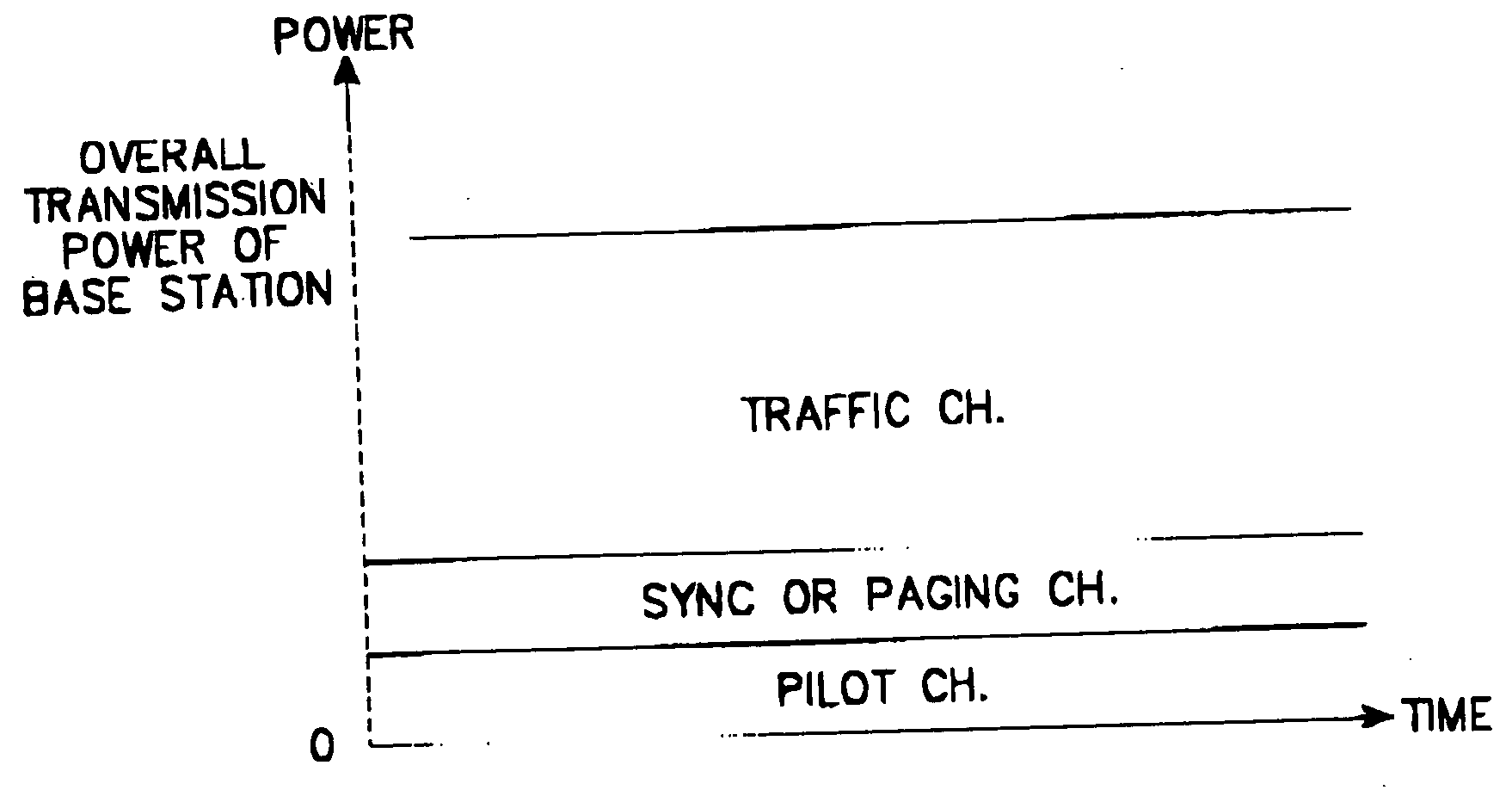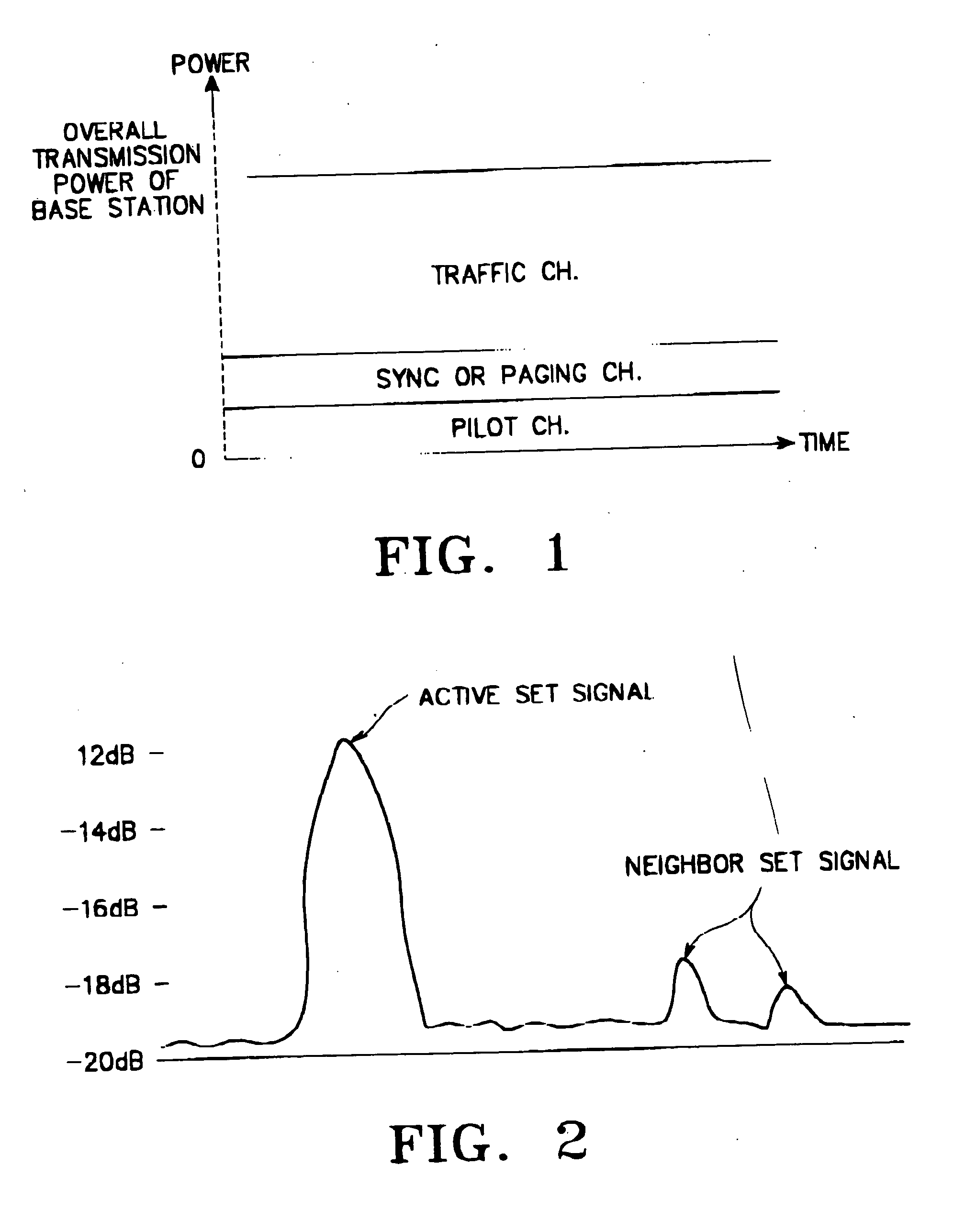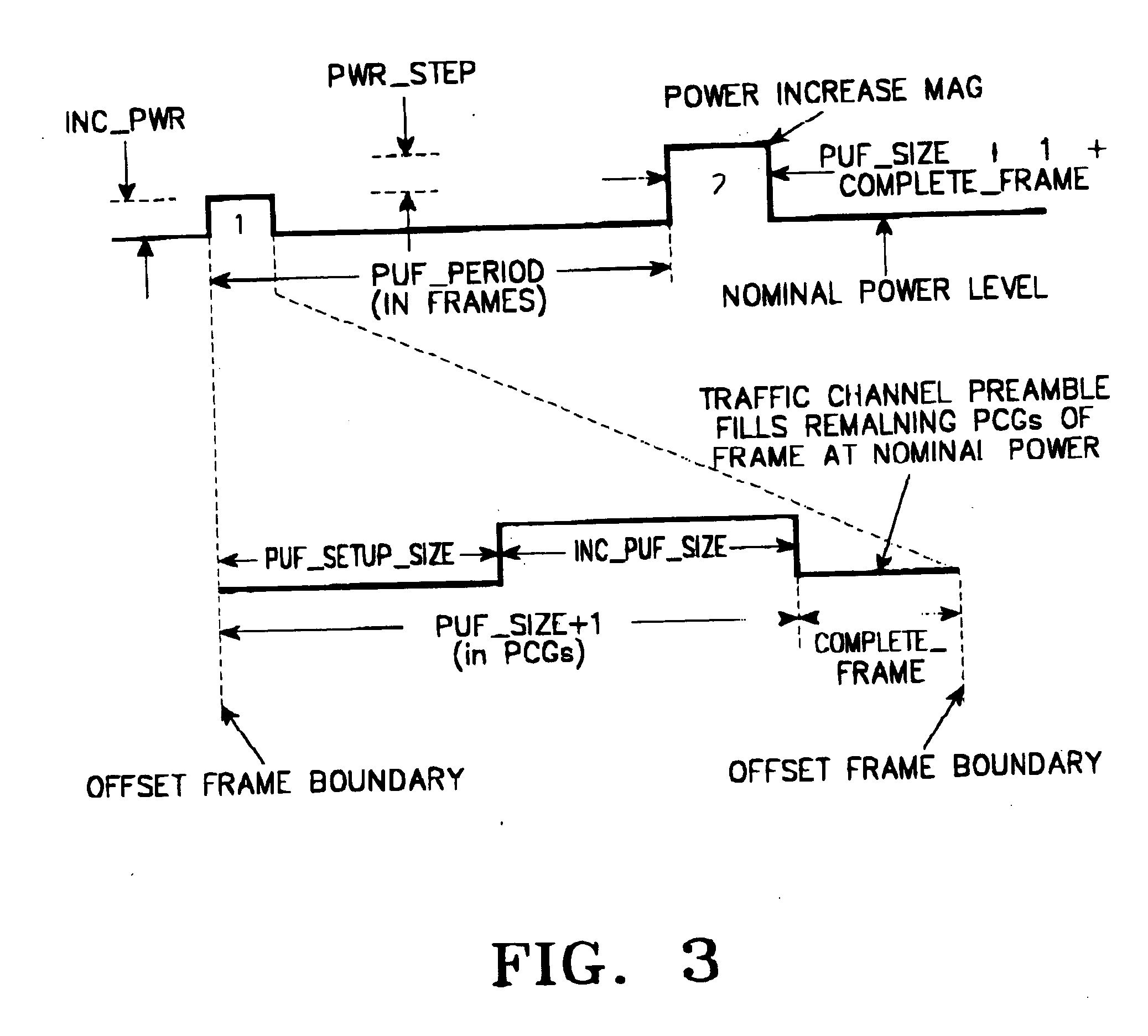Channel communication apparatus and method in CDMA communication system
- Summary
- Abstract
- Description
- Claims
- Application Information
AI Technical Summary
Benefits of technology
Problems solved by technology
Method used
Image
Examples
Embodiment Construction
[0050] Preferred embodiments of the present invention will be described in detail referring to the attached drawings. Like reference numerals denote the same components and it is to be noted that a detailed description of a known function or structure of the present invention will be omitted if it is deemed to obscure the subject matter of the present invention.
[0051] In accordance with an embodiment of the present invention, a base station sends a pilot signal on a forward pilot channel at an increased power level for a specified time period in order to allow efficient search in a terminal. The terminal despreads the received signal at the higher power level for a specified time period, detects signals from a plurality of base stations, and measures the signal level, delay, or delay relative to other paths of a multipath signal received from each base station.
[0052] It should be noted that the following description of the present invention refers to the other channels except for ...
PUM
 Login to View More
Login to View More Abstract
Description
Claims
Application Information
 Login to View More
Login to View More - R&D
- Intellectual Property
- Life Sciences
- Materials
- Tech Scout
- Unparalleled Data Quality
- Higher Quality Content
- 60% Fewer Hallucinations
Browse by: Latest US Patents, China's latest patents, Technical Efficacy Thesaurus, Application Domain, Technology Topic, Popular Technical Reports.
© 2025 PatSnap. All rights reserved.Legal|Privacy policy|Modern Slavery Act Transparency Statement|Sitemap|About US| Contact US: help@patsnap.com



